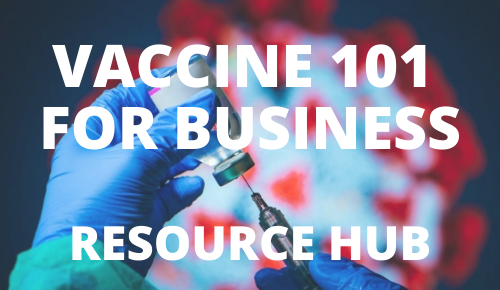
This pandemic has sparked a definite need for dramatic transformation. You may have found yourself wanting to shave your head, quit your job, or remodel your house. Turns out, major companies have also been bit by this rebrand bug.
Burger King rebranded, embracing a 70s-inspired look with their new packaging, typography, and uniforms. They even unveiled a “new” logo that is essentially a polished version of the one they launched back in 1969.
General Motors, upon entering the electric vehicle game, rebranded by ditching their dominant, all-caps logo for a gentler, lowercase one that reflects other brands in the EV scene.
Match, the online dating service, delivered a classy rebrand with a serif-based typeface, a luxe colour palette, and romantic imagery that their millennial audience is sure to love.
Masterclass, JetPuffed, Rolls-Royce, Intel, Midol, and more all introduced logo refreshes and full-on rebrands since the start of the pandemic.
So, why is everyone rebranding?
Is it a panicked, defensive response to a crisis? Are they rebranding just to feel something? Not the case; there are three main reasons why rebranding during a pandemic makes sense:
- There’s more money With the pandemic putting certain activities on hold, companies can invest in themselves using funds that, in a pandemic-less reality, would’ve gone elsewhere.
- Lockdowns and cancelled events mean more time and In addition to money, an effective rebrand requires a ton of attention from your entire team.
- Pandemic or not, you need to keep your brand in A rebrand is like an exercise routine for your company. This necessary care leads to long-term brand benefits, including better resonance, increased margins, and improved customer loyalty.
5 Signs YOU Need to Rebrand.
You’re struggling to stand out
When branding is done well, it sets you apart from your competitors. It’s not just about the look of your product—having the most eye-catching packaging or the most hi-vis logo—it’s about creating a distinct experience that meets the needs of your defined audience better than any other brand.
Define what sets you apart from your competitors. If you can’t offer a competitive advantage that makes your rivals irrelevant (i.e. the lowest price or the most cutting-edge tech), you’ll need to dig into your customer advantage. Consider your customers’ needs and values, find out what qualities they’re willing to pay more for, and see how your brand can adopt these characteristics in an authentic, timely, and attention-grabbing way.
Think of it this way: if you’re an energy drink company looking to be the beverage of night owls, don’t choose a calming, neutral colour palette or create ads that reach and appeal to the masses. Construct a brand that polarizes the market to your advantage. Forget about being liked by everyone, embrace those harsh neon colours and invest in dynamic ads that use AI to keep your niche audience engaged at all hours.

You’re having trouble raising your prices
People are willing to pay more for a great brand. If all you have to offer your customer is the same brand and products you’ve had for the past decade, they won’t tolerate an increase in your asking price. And if your market price stays the same while the cost of production increases, you’re going to be in big trouble.
With a smart rebrand, you can change the value customers place on your product or service—and change how much they’re willing to pay for it.
Your branding should amplify your core values—especially the polarizing ones. If your audience can connect with your brand’s values, they will see your brand as an extension of their lifestyle and far more than just a commodity. When your customer understands that they’re buying more than just a product, they will pay for more than just a product.
Your business model or strategy has changed
Over the years, the way your company works can and should change. Have you discovered a new approach? Have you launched a new product or set your sights on a new market segment? Has your mission broadened or narrowed?
New technology, cultural shifts, social trends—several outside factors can force or inspire you to adjust the inner workings of your brand.
These changes are natural and necessary. Make sure your internal advancements are reflected externally. Your audience expects you to be innovative—don’t disappoint them.
Your brand is surrounded by negative perceptions
Language evolves, accidents happen, and pop culture produces fresh innuendos faster than you can refresh Urban Dictionary. A rebrand can help you combat negative perceptions surrounding your brand or help you maintain a respectable image.
Some rebrands require a PR response or an edit to your brand language to neutralize or avoid offensive and counter-intuitive ideas. Some rebrands call for a complete transformation to completely remove your brand from tragic narratives.
Invest time in perception mapping. This audit will uncover all possible associations with your brand, as well as where these perceptions are coming from and how deeply ingrained they are.

You’re trying to connect with a new audience
Looking at your company’s business model will let you spot opportunities for new key partners, revenue streams, and channels. This will leave you with a list of potential audiences that you won’t win over with your current brand. You’ll need a rebrand that is built with these new audiences in mind.
By monitoring the wants, needs, fears, and buying habits of new and existing customers, you can find key insights to help you shape your brand to fit their preferences.
On the other hand, maybe you’re not attracting the best talent. Great people want to work for great brands. Consider your employer brand: the image of your company that is greatly defined by your internal culture. By listening to what your current employees need, and where they think your business’s strengths and weaknesses lie, you’ll be able to create a more motivating workplace that attracts similarly motivated and talented people.
What’s stopping you?
Rebranding isn’t a random effort to impress your audience. It’s a strategic, essential, and ongoing process of anticipating, fulfilling, and influencing your audience’s needs.
Think it’s time to rebrand? Our VantagePoint™ Workshop tools include team-building exercises for value and perception mapping, business models, customer personas, and more. Download our workshopping tools now.




